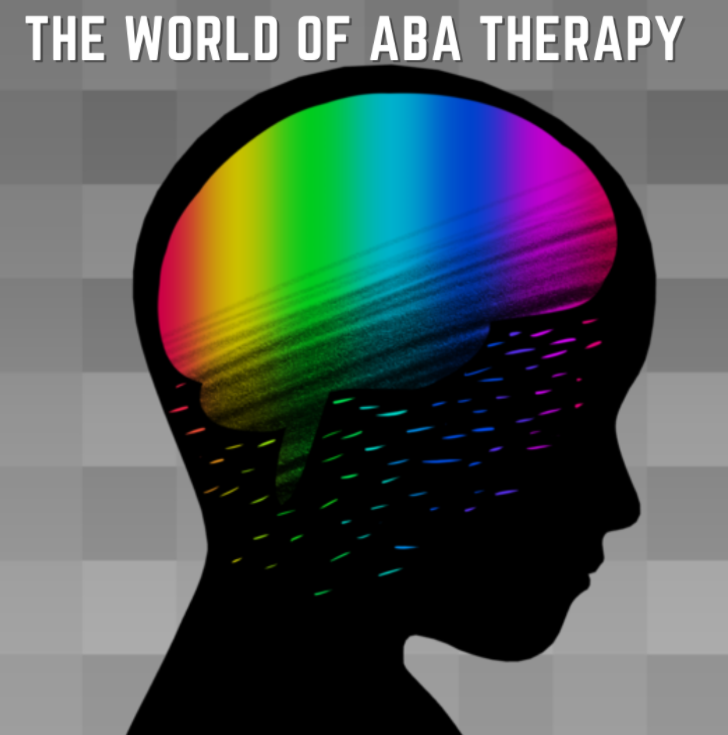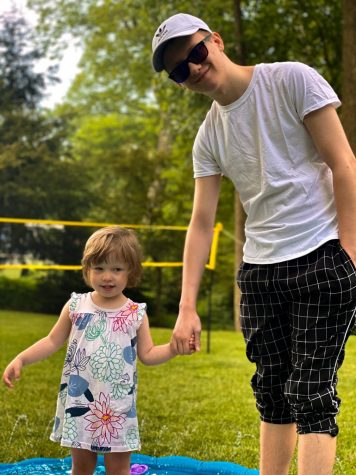Understanding the World of Autism Therapy
Explaining the complexities behind autism and ABA therapy.
April 2, 2021
Autism is one of the most misunderstood and complex disorders, and although it is not new, there is a disconnect between older generations and newer ones on what autism really is. For the past twenty years, the prevalence of autism in children has gone from 1 in 150 to 1 in 54. This is mostly due to the development of diagnostic medicine, but researchers also claim that there are possible environmental risk factors, ones that cannot yet be ruled out.
A lot of the focus on autism is centered around when or why it happens. And although many seek to understand it, there are also many that see it as an illness or a burden. This causes distress in the lives of autistic adults and kids alike. But, due to the lack of a gold standard of testing for depression within autistic children, it’s hard to pinpoint the exact percentage of autistic patients with depression and/or anxiety and different studies show that depressive episodes within autistic patients vary from 1.5% to 10%.
In a survey conducted in the U.K. 111 participants were asked if they feel generally accepted in society. 7% said yes, 43% said no, and 48% said sometimes. (2% preferred not to say). Showing a clear misunderstanding of autistic people within society. And points out the glaring need for a disorder like autism, to be better taught to the general public. To better understand this disorder, it’s important to look at the main methods that are used to aid autistic patients.
ABA therapy (applied behavior analysis) is the go-to method for helping autistic children. ABA therapists look at many different aspects of a child’s life to better determine the methods needed to aid in their development.
“ABA therapy looks at the communication, social, and behavior excesses or deficits in each individual. We assess these areas and work with parents and other caregivers including teachers,” said an ABA therapist, who asked to remain anonymous. She said remaining anonymous would better protect her patients.
This essentially means that in each individual child, there could be a lack of certain traits(e.g. a lack of communication) or there could be too much of something (e.g. an abundance of certain behaviors). In order to address these issues, ABA therapists will “do specific programming, in order to remediate those deficits and reduce those problem barriers.”
Before therapists are able to make a proper plan that will cater to the child’s needs, the therapist said that she first has to “do interviews with parents, observe the client and do specific assessments. Which involves direct observation and direct testing of their skill areas.” After doing these interviews and assessments, she is able to better understand where their most need is occurring.
The therapist also pointed out that when considering what treatment best suits a child, cultural competence is very important. Knowing things like their social and economic needs or their religious needs play a big role. For example, certain kids might need speech devices. However, there are many that might not be able to afford them out of pocket, and insurance might also not cover it. And this extends to the therapy overall. This determines how many hours of service she can provide, and certain items/stimuli that she would be able to utilize.
A very common and important thing to remember about ABA therapy, much like any therapy, is that not everything works. There are times when certain supports might need to be shifted.
“If something isn’t working, the first thing I look at is whether or not everyone around the particular child is doing what I said effectively,” said the therapist, “Are they following my instructions, and are they doing it every time? The next thing I would look at is the environment, is there something in the environment that might need to be changed or adjusted first?”
She went on to talk about the research she might have to do. Since ABA is such an individual-based program, what works really well for one person may not work well for another. She constantly reaches out to mentors and other professionals in the field. Since ABA is such a broad field, the most important thing is continuously educating yourself. She pointed out that she frequently attends webinars and reaches out to people who are experts in specific areas. It’s not only a learning experience for the parents and the child, but one for her too.
This can deter a lot of young, aspiring psychologists. When someone gets a four-year psychology degree, it’s hard to find jobs in which that is the only requirement. Becoming an ABA therapist is useful when it comes to adding on to your portfolio, and the pay isn’t too bad either (around 39k a year, entry-level). So then why do some ABA therapists leave the field? According to therapist, the main factor is the intensity of the job.
“ABA therapy is intense, it’s a very stressful job. You have to deal with some very intense behaviors and a lot of responsibility,” said the therapist. “It’s very easy for people to get burned out and tired. And they might realize that dealing with those intense behaviors is not something that they want to do in their career.”
She went on to talk about how most ABA therapists that leave, usually weren’t doing their job well enough.
“A lot of ABA therapists don’t consider the individual as much as they should, and they don’t listen to the autistic community enough either. So you see a lot of complaining about procedures or compliance training. You have a lot of people with a very negative view of ABA, and a lot of it is rightly so.”
There are some things about the autistic community that the therapist said she has learned over the years, that she would like to see become common thought. She specifically spoke about the terminology associated with autism.
“Some individuals really use derogatory terms, such as the r-slur. If you look at the difference between professionals versus actual people with autism, you see that a lot of professionals are taught this ‘people-first’ language,” she said. “So instead of describing kids as autistic, they describe them as having autism. Or a child with autism. Whereas many people who are actually autistic, prefer to be referred to as autistic. An autistic individual.”
The difference might be hard to comprehend for some people. But it comes down to how these words are perceived. Describing a kid as someone with autism, makes it seem more like an ailment and something that needs to be cured. As opposed to describing a kid as being autistic, which shows that it’s a part of who they are as a person.
“The most important part is listening to the voices of the autistic community, and understanding their preference.”







